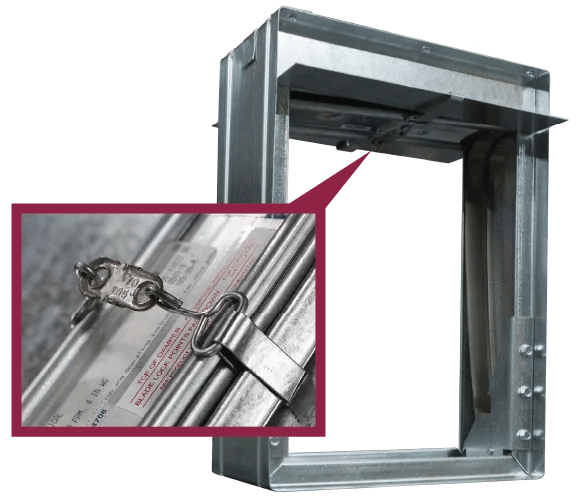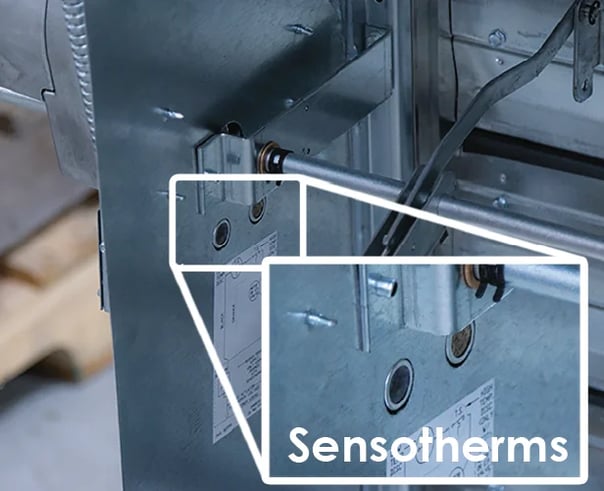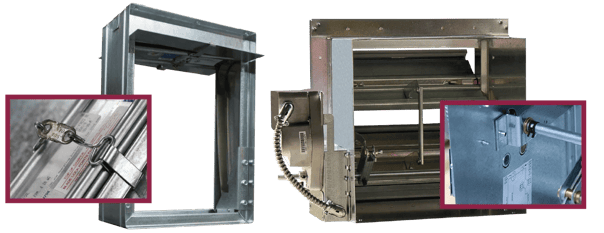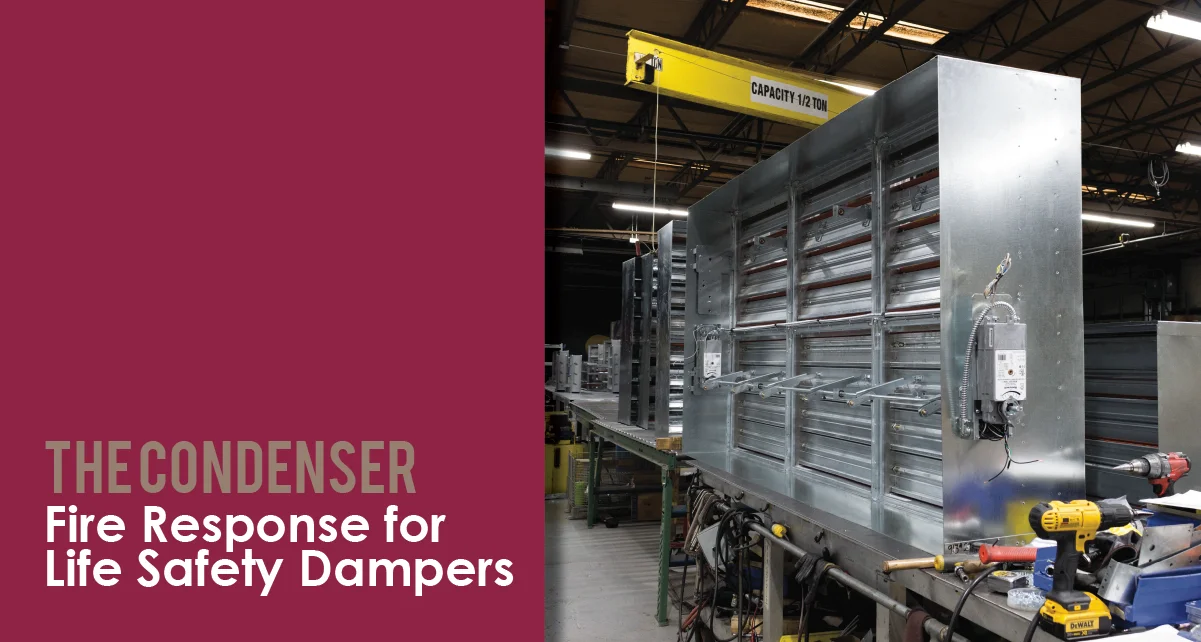Fire dampers must react quickly to a potential fire event. Learn about fire response in HVAC with this quick Condenser article.
Fire Response in HVAC
Fire dampers are part of your building’s passive fire protection. They are designed slow the spread of flames during a fire event. Every component is designed to keep the fire barrier intact, from the fire damper sleeve to the damper itself. Fire dampers and combination fire-smoke dampers must act quickly at the first signs of fire.
Specifically, these dampers respond to the sudden buildup of heat. Fire response devices, like fusible links, help fire dampers respond when needed during an emergency.
.webp?width=600&height=296&name=Hubspot%202024%20-%20Passive%20Fire%20Protection%20-%20damper%20photo%20(Resize).webp)
Looking to meet fire safety requirements? Louvers & Dampers can help. We build curtain blade fire for HVAC. Browse our catalog of dampers online. Know what you need already? Contact L&D today and let’s get started!
Fusible Links
The specific fire response device will depend on the damper. Fire dampers will often use fusible links to hold their blade position, because these dampers often don’t have an actuator. Most fire dampers will remain in the fully open position throughout the day, until they need to close.
Fusible links for fire dampers are metal pieces that resemble the tab on a soda can, with a hole on each side of the tab. These links act as the centerpiece of a holding mechanism. The link’s purpose is to hold the blades in the fully open position. Its exact placement will depend on the type of fire damper.

Fusible links are made from a mixture of metals that melt at specific temperatures, so that the link will break apart when heat increases passed a specific threshold. This temperature will typically correspond with the damper's fire resistance ratings. Once the link breaks, the blades will be released and the fire damper will close, by gravity or by spring power.
Sensotherms
Combination fire-smoke dampers will use electric actuators, which are tied to smoke detection systems and to a heat response device. This ensures that the damper can react to both hazards. Therefore, combination fire-smoke dampers will use thermal discs instead of fusible links.
Thermal discs are bimetallic pieces that are incorporated into the wiring of the damper’s electric actuator. The disc completes the actuator’s circuit, so that the actuator stays powered while it is in place. The damper will close when the thermal disc “pops”.

The thermal disc quickly expands when exposed to intense heat, which will break the actuator’s circuit and cut off power. In response, the actuator’s internal springs will drive the damper’s blades to the closed position. Thermal discs can be added to the actuator by the manufacturer, as an electric heat response device, or they can be integrated into certain actuator models.
When installed, the thermal disc will look like a press button which pops out when the disc has been tripped. Technicians can press the disc back into place to restore the actuator’s power.
Response Time is Vital
Fire dampers and combination fire-smoke dampers need to respond quickly to a fire event. Every second counts in an emergency. As part of a passive fire protection system, these dampers can help occupants safely evacuate the building. They react with the help of fire response devices like fusible links and thermal discs.

For more on dampers, check out these Newsstand articles:
- HVAC Damper Control - Automation Equipment for Dampers
- Fire Damper Types and Benefits
- The Condenser - Air Performance and Keeping the Flow
.webp?width=91&height=70&name=MCDLG%20Logo%20(Resize).webp)






